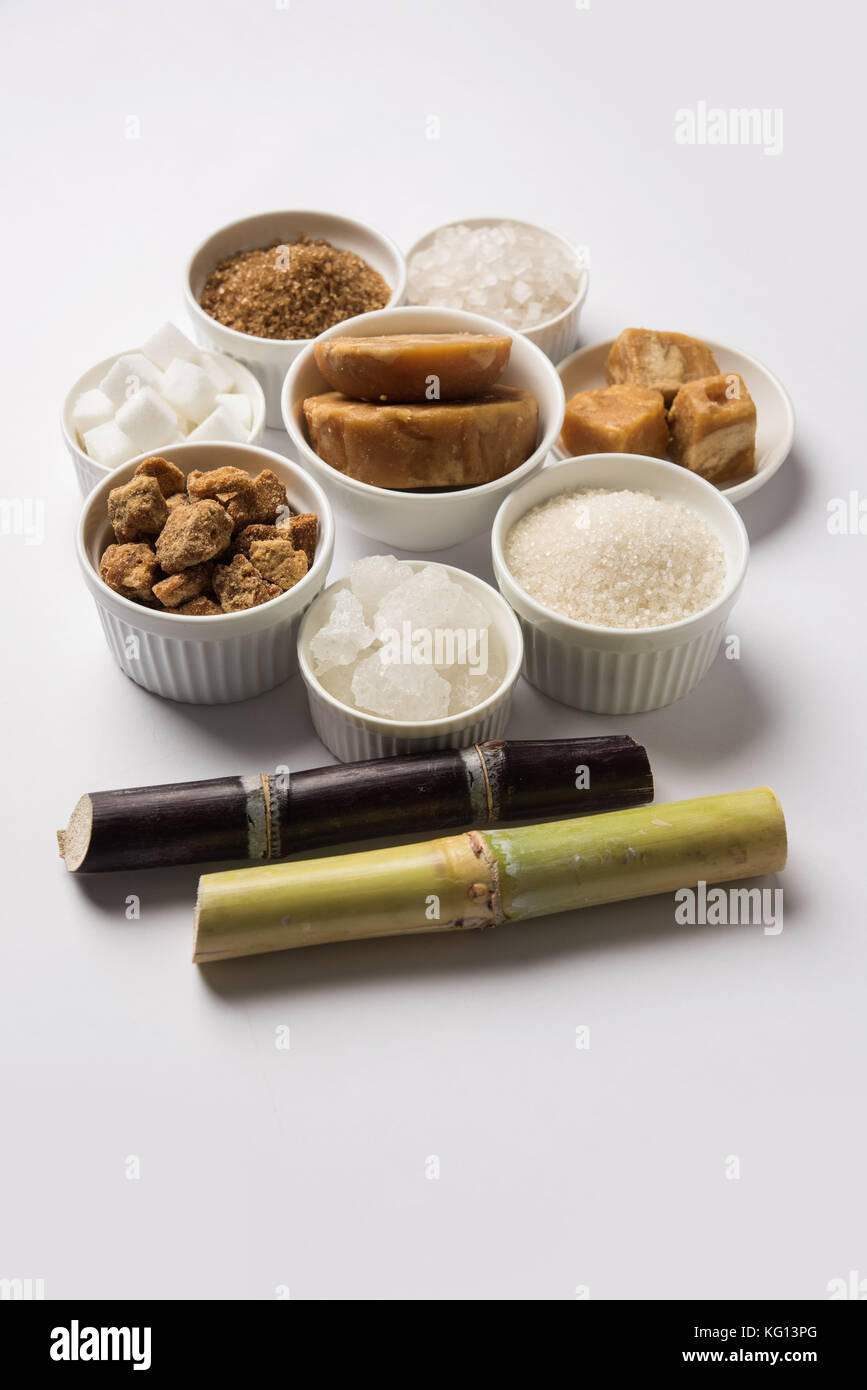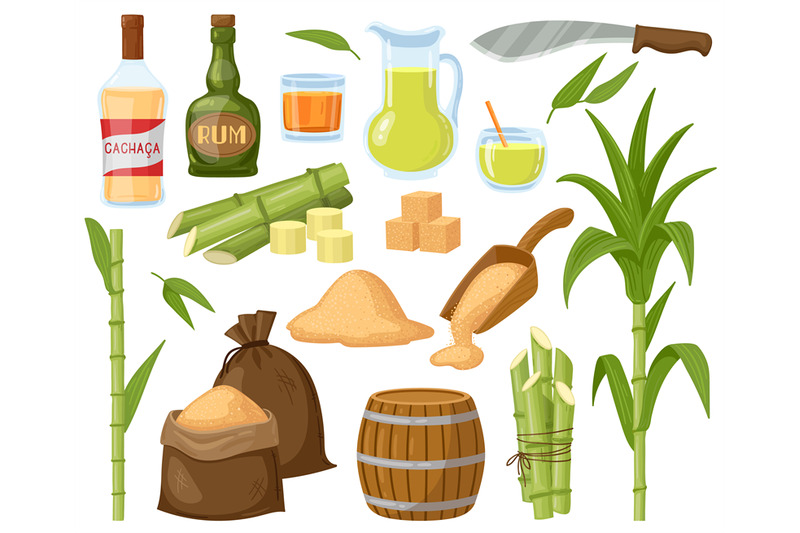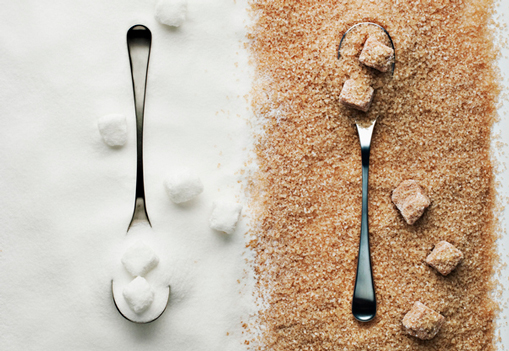How to Identify sugar cane products for Your Business
Discover Everything About Sugar Cane: From Production Strategies to Product Innovations
Sugar cane is a crop with both historic importance and modern significance. Its cultivation has actually developed from traditional techniques to contemporary techniques that satisfy today's farming needs. This evolution consists of innovative handling methods that transform the cane right into a selection of products. As the market deals with ecological challenges, new sustainable practices are emerging. The complexities of sugar cane manufacturing and its future in international markets existing fascinating inquiries worth discovering additionally.
The Background of Sugar Cane Growing
Although sugar cane is frequently connected with tropical climates, its farming has an abundant background that dates back hundreds of years. Coming From Southeast Asia, the earliest records of sugar cane's use go back to around 8000 BCE, where it was chewed for its sweetness. By the first centuries, it spread out to India, where it came to be indispensable to regional cultures. The modern technology to crystallize sugar arised in India by the fifth century CE, marking a substantial milestone in sugar production.With the expansion of trade routes, sugar cane discovered its means to the Middle East and, eventually, Europe. The establishment of haciendas in the Caribbean throughout the 16th century transformed the international sugar market, driven largely by colonial expansion. As sugar became a desired product, its growing shaped economic climates and societies, preparing for modern-day manufacturing methods that advanced with the development of farming and technology.
Standard Farming Strategies
As sugar cane cultivation advanced through background, standard farming methods became fundamental practices that shaped its manufacturing. These techniques, usually passed down through generations, included making use of guidebook tools such as hoes and machetes for growing and gathering. Farmers usually prepared the dirt by hand, utilizing crop turning and intercropping to keep soil fertility and control pests. Water management was essential, with several standard growers counting on all-natural irrigation systems and rain harvesting.Planting was oftentimes to coincide with seasonal rains, assuring perfect development problems. Commonly, sugar cane was planted in rows, enabling less complicated upkeep and harvesting. Harvesting was done by hand, requiring competent labor to lessen damages to the stalks. On the whole, traditional farming methods highlighted sustainability and a deep understanding of the regional environment, creating a vital part of the cultural heritage bordering sugar cane agriculture. These methods prepared for future developments in sugar manufacturing.
Modern Agricultural Practices
Modern agricultural methods have significantly incorporated precision farming techniques to boost sugar cane manufacturing. sugar cane products. These techniques make use of data-driven strategies to maximize inputs and improve yields while minimizing ecological impact. In addition, lasting bug monitoring approaches are being embraced to shield plants without jeopardizing eco-friendly equilibrium
Precision Farming Strategies
Precision farming techniques represent a transformative strategy to agriculture, leveraging innovation to boost efficiency and sustainability in sugar cane manufacturing. By making use of devices such as GPS, remote sensing, and information analytics, farmers can monitor crop health, soil conditions, and water use with unprecedented precision. This data-driven strategy permits targeted interventions, decreasing waste and maximizing source allowance. Drones and satellite images facilitate real-time analyses, making it possible for growers to react swiftly to emerging problems or modifications in environmental problems. In addition, precision farming improves return projecting and boosts decision-making processes, inevitably leading to much better crop management. Because of this, sugar cane manufacturers can achieve greater efficiency and productivity while decreasing their ecological impact, adding to the overall advancement of modern-day agricultural methods.

Lasting Insect Administration
Effective monitoring of pests is crucial for preserving the wellness and productivity of sugar cane plants. Sustainable bug monitoring practices concentrate on minimizing chemical inputs while maximizing ecological equilibrium. sugar cane products. Integrated Insect Administration (IPM) is a prominent method, combining organic control, habitat adjustment, and the usage of immune sugar cane selections. Farmers are increasingly using useful pests and natural killers to suppress parasite populaces, decreasing reliance on artificial pesticides. Monitoring insect levels with catches and scouting permits for timely treatments, making sure that control steps are used just when needed. In addition, crop rotation and intercropping boost biodiversity, further lessening insect episodes. By embracing these sustainable methods, sugar cane manufacturers can keep crop return while promoting environmental stewardship and minimizing the unfavorable effects related to standard pest control methods
Handling Sugar Cane: From Area to Factory
The elaborate trip of sugar cane from field to manufacturing facility includes a number of crucial steps that change this vivid plant into a raw product for sugar manufacturing. After gathering, sugar cane is promptly carried to the handling center to lessen sucrose loss. The primary step at the manufacturing facility is washing the cane to remove impurities, complied with by crushing to extract the juice. This juice goes through clarification, where it is warmed and treated with lime to eliminate strong fragments and impurities.Once clarified, the juice is concentrated via evaporation, leading to syrup. The syrup is after that taken shape by cooling down and including seed crystals, leading to the formation of sugar crystals. Complying with formation, the sugar goes through centrifugation to separate it from molasses. Ultimately, the sugar is dried out, packaged, and gotten ready for circulation. Each step in this procedure is essential for making sure the quality and efficiency of sugar production.
Sugar Cane Products and Their Applications

Sugar and All-natural Sugars
Although frequently neglected, sweeteners and natural sugars acquired from sugar cane play a crucial role in the food and beverage sector. These items, consisting of sucrose, molasses, and raw sugar, provide a series of flavors and capabilities that boost numerous food products. Sucrose, one of the most typical sugar, is widely utilized for its sweetening properties, while molasses adds depth and intricacy to baked products and sauces. All-natural sugars from sugar cane are preferred for their minimal processing and viewed health and wellness advantages contrasted to sweetening agents. On top of that, advancements in sugar cane handling have actually led to alternatives like liquid sugar and focused cane juice, accommodating diverse consumer preferences. On the whole, sugar cane-derived sweeteners are indispensable to flavoring, maintaining, and enhancing food experiences.
Biofuels and Renewable Resource

Sustainability in power production has actually progressively turned attention to sugar cane as a feasible resource for biofuels. This tropical crop, rich in sucrose, can be converted right into ethanol, a sustainable fuel that reduces greenhouse gas exhausts compared to nonrenewable fuel sources. The fermentation procedure makes use of molasses, a by-product of sugar production, making best use of source efficiency. Sugar cane's biomass, consisting of bagasse and leaves, can be changed into bioenergy, adding to a round economy. Numerous advancements in processing techniques enhance the return of biofuels, making sugar cane an appealing choice for energy diversity. Furthermore, the growing need for sustainable energy resources drives research study right into improving cultivation methods and lowering the carbon impact of biofuel production, positioning sugar cane as a principal in the sustainable power landscape.
Advancements in Sugar Cane Sustainability
As the global need for sugar rises, innovations in sugar cane sustainability have actually come to be vital to satisfy both ecological and economic difficulties. Modern agricultural practices are being carried out to decrease water use, improve soil health and wellness, and lessen chemical inputs. Strategies such as precision farming make use of data analytics and modern technology to maximize resource usage and increase crop returns sustainably.Additionally, the development of genetically modified sugar cane varieties aims to boost resistance to bugs and ecological stress factors, leading to higher efficiency with fewer inputs. Waste management practices are additionally progressing; spin-offs from sugar cane processing are being transformed into bioenergy, lowering dependence on fossil fuels.Furthermore, partnerships in between agricultural stakeholders and environmental organizations are promoting practices that promote biodiversity and ecological community health and wellness. These technologies not only aid minimize the ecological impact of sugar cane manufacturing yet likewise produce a much more durable and lasting market for the future.
The Future of Sugar Cane in Global Markets
While international sugar intake remains to rise, the future of sugar cane in worldwide markets go to this website deals with both possibilities and difficulties. The enhancing need for biofuels and sustainable items presents a considerable possibility for sugar cane manufacturers, as the plant can be utilized for ethanol manufacturing and various other eco-friendly options. In enhancement, innovations in processing methods might enhance performance and reduce costs, making sugar cane a lot more affordable against various other sweeteners.However, obstacles such as environment change, changing market costs, and transforming customer preferences toward much healthier choices make complex the landscape. Furthermore, trade policies and tariffs can influence the global market dynamics, affecting farmers' earnings. As stakeholders navigate these complexities, cooperation amongst manufacturers, federal governments, and researchers will certainly be important in adapting to the advancing market. The future of sugar cane rests on stabilizing these possibilities and difficulties to protect its place in a rapidly transforming worldwide economy.
Frequently Asked Concerns
Just How Does Sugar Cane Influence Local Ecosystems and Biodiversity?
The growing of sugar cane considerably affects neighborhood communities and biodiversity. Monoculture practices can result in habitat destruction, while chemical use may damage non-target species, eventually disrupting environmental balance and minimizing varieties richness in influenced areas.
What Are the Wellness Impacts of Consuming Sugar Cane Products?
The wellness effects of consuming sugar cane products include why not try these out prospective benefits like energy boosts and antioxidants, but too much intake may lead to weight gain, oral issues, and raised danger of diabetic issues, urging moderation in usage.
Exist Any Kind Of Alternatives to Sugar Cane for Sugar Manufacturing?
Alternatives to sugar cane for sugar manufacturing include sugar beet, maple sap, and coconut hand sap. These sources provide comparable sweetness and can be cultivated in various environments, using diverse choices for sugar manufacturing worldwide.
Just How Is Sugar Cane Impacted by Climate Change?
Climate modification substantially impacts sugar cane, causing modified rains patterns, increased temperatures, and increased insect pressures. These aspects can decrease returns and influence general top quality, motivating the demand for adaptive farming practices to ensure sustainability.
What Are the Labor Problems for Sugar Cane Employees Worldwide?
Labor problems for sugar cane workers worldwide vary considerably, frequently defined by low incomes, long hours, and insufficient security actions. Several face exploitation and extreme working environments, specifically in establishing nations reliant on sugar cane production.